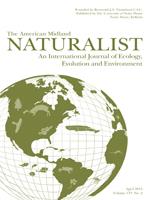Overabundance and associated impacts of deer on mainland forests of the United States have been topics of extensive investigation and management discussion. Conversely, deer populations on barrier islands have been less studied with few investigations of their impacts on maritime evergreen forest. We investigated how deer influenced understory vegetation and oak seedling survival following culling of deer. In 2007 twenty 10 m × 10 m paired exclosure and control plots were established within a 77.3 ha protected area on Bald Head Island, North Carolina. Vegetation was sampled in 2011. We determined deer did not affect understory vegetation and oak survival was low and not influenced by deer. Chronic over-browsing (i.e., ‘ghost of herbivory past’) was unlikely because deer were not abundant on Bald Head Island until the 1990s, oak seedlings were observed where light was abundant, and deer were observed using other cover types on the island. Continued monitoring of the forest understory and maintenance of deer at the current population level will help conserve maritime forest on Bald Head Island.
How to translate text using browser tools
1 April 2015
Effects of White-Tailed Deer (Odocoileus virginianus) on the Maritime Forest of Bald Head Island, North Carolina
John Taggart,
Zachary Long
ACCESS THE FULL ARTICLE
It is not available for individual sale.
This article is only available to subscribers.
It is not available for individual sale.
It is not available for individual sale.

The American Midland Naturalist
Vol. 173 • No. 2
April 2015
Vol. 173 • No. 2
April 2015




